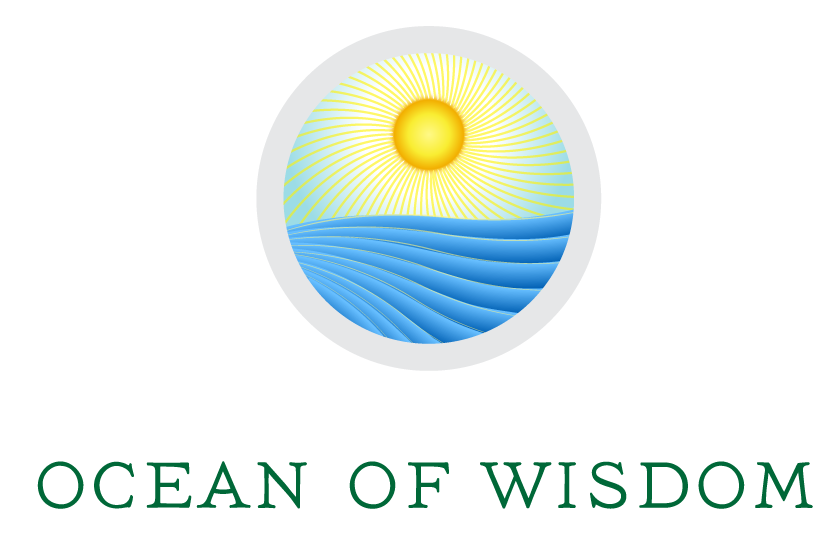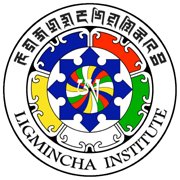
H.E. Yongdzin Tenzin Namdak Rinpoche
H.E. Yongdzin Tenzin Namdak Rinpoche is the most senior teacher of the Bon tradition and is considered the world's foremost expert on Bon. Yongdzin Rinpoche was born in 1926 in Khyungpo Karru in the Khyunpo district of Kham province, eastern Tibet. At age 7 he entered Tengchen Monastery, a local monastery where his uncle served as chant leader. There he entered into an extensive course of education, and at age 14 he took his vows as a monk. In 1940 at age 15, the young monk traveled with his uncle to Yungdrung Ling, a leading Bon monastery in central Tibet. From 1940 to 1942 he spent much time there helping to execute wall paintings, making use of his training since age 11 as an artist and painter. In late 1942 he went on pilgrimage in Nepal and western Tibet, returning to Yungdrung Ling in mid-1943 to begin his studies in philosophy. From 1944 to late 1948 Yongdzin Rinpoche lived and studied with his tutor and master Gangru Tsultrim Gyaltsan Rinpoche, who had retired from 18 years of service as lopon (principal teacher) of Yungdrung Ling. Much of this period was spent in seclusion in a remote meditation cave at Juru Tso Lake in Namtsokha, northern Tibet, where Gangru Ponlob Rinpoche taught him grammar, poetics, monastic discipline, cosmology and the stages of the path to enlightenment according to sutra, tantra and dzogchen. During this time, along with his busy schedule of scholarly pursuit on various profound subjects of philosophy and general Tibetan sciences, Rinpoche managed to complete 900,000 accumulations of the Ngondro practices as well as the dzogchen practices of trekchod and thogal with profound accomplishment. At the conclusion of this time, in late 1948 he traveled to Menri Monastery in Tsang province, central Tibet, to complete his studies toward a geshe degree (the Tibetan equivalent of a doctorate in philosophy). His main teacher at Menri was Lopon Sangye Tenzin Rinpoche. In 1952 at age 27, he was awarded his degree, and that same year was elected to succeed his master as lopon (principal teacher) of the monastery. By 1957, conflict was escalating in central Tibet between native Tibetans and the encroaching Chinese Communists, at which time Lopon Tenzin Namdak Rinpoche retired from his activities as lopon. He traveled to Se-zhig Monastery on the Dang-ra lake in northern Tibet and remained in retreat there until 1960, just after the Lhasa uprising against the Chinese Communist occupiers. Amid the violence and occupation, many famous living Tibetan masters of the time were forced to flee their homeland, among them H.H. the Dalai Lama and H.H. the Gyalwa Karmapa. Lopon Tenzin Namdak Rinpoche attempted to escape on foot, along with group of lamas and monks of Menri including the 32nd abbot of Menri, his foremost disciple, carrying with them important texts and relics. But on the way south toward India he was shot by Chinese soldiers. Thinking him dead, the Chinese left the great master lying in the dirt. One of his close attending monks helped him to a nearby family, who took him into hiding. In his escape Yongdzin Rinpoche was able to conceal the famous stupa of Nyame Sherab Gyaltsen together with statues, precious relics and other sacred objects in a cave at Lug-do Drag in the area of Tsochen, Tibet. When he had recovered enough to resume his travels, he carried with him volumes of texts to ensure their preservation. (These sacred objects are now safely restored in Menri Monastery, Tibet.) For about 22 days the escape party traveled by night and hid during the day until they reached safe haven in Nepal along with the volumes of important texts. In Nepal, he stayed for some time at Najyin Monastery, Kathmandu. In 1961 he met the renowned English Tibetologist Dr. David Snellgrove of London University, who invited him to London along with Geshe Sangye Tenzin (the present H.H. Menri Trizin) and Geshe Samten Karmay. Under a Rockefeller Foundation Grant in the visiting scholar program, Lopon Tenzin Namdak resided in England, first at the University of London, and then at Cambridge University. Thereafter he made a retreat at a Benedictine monastery on the Isle of Wight. His three years in England (1961–1964) and collaboration with Dr. Snellgrove culminated in the 1967 publication in English of The Nine Ways of Bon (Oxford University Press), the first scholarly study of the Bon tradition to be made in the West. In 1964 he returned to India where he republished precious Tibetan texts. There he also assumed the critical task of raising funds to establish a Bonpo settlement and monastery in northern India. From 1964 to 1967 Lopon Tenzin Namdak strived desperately to keep the Bonpo people and their culture alive in exile. In 1967, with financial assistance from the Catholic Relief Service, he bought a tract of land at Dolanji, near Solan in Himachal Pradesh, northwest India, and started a Tibetan settlement, school and monastery there. Following the 1963 death of Kundun Sherab Lodroe (the 32nd abbot of Menri), the abbot of Yungdrung Ling, H.H. Sherab Tenpai Gyaltsen, became temporary spiritual leader of the Bonpo community in exile. By the leadership of H.H. Sherab Tenpai Gyaltsen and the inspiration of Lopon Sangye Tenzin and many other lamas, Yongdzin Rinpoche took responsibility for locating a successor to the deceased abbot. In March 1968, Sangye Tenzin Jongdong (H.H. Lungtok Tenpai Nyima) was selected in the traditional way as Menri Trizin, throne holder of Menri Monastery; and thus became the spiritual leader of Bon. Together, Yongdzin Rinpoche and H.H. Menri Trizin worked to build the monastic community in Dolanji, which at the time was the only Bonpo monastery in India. In mid-1968 Yongdzin Rinpoche made a second visit to Europe and served as visiting scholar at the University of Munich. From 1969 to 1978 he continued his work at Dolanji, including writing, publishing, practicing, transmitting initiations and teaching the lamas and monks. Upon the death of Lopon Sangye Tenzin in 1977 after a protracted illness, he was given full responsibility for teaching the younger generation of monks. In 1978 a dialectic school was established and organized under his guidance. In 1986 the first class of monks graduated from the Dialectic School with their geshe degrees. That year Yongdzin Rinpoche traveled to visit Tibet; and on his return via Kathmandu, Nepal, with his money and some loans he acquired a small piece of land where he would build the future monastery of Triten Norbutse. The monastery was formally founded in 1987 on its site at the foot of Nagarjuna hill to the west of the famous hill of Swayambhu at the far end of the Kathmandu Valley. Triten Norbutse has since become one of the two main Bon monasteries outside Tibet, providing an extensive and rigorous comprehensive study of the broad spectrum of Bon teachings and traditions. Today 170 resident monks study and practice there. Yongdzin Tenzin Namdak Rinpoche maintained a regular teaching schedule there, while making numerous excursions to teach in the West. In 1993, Heart Drops of Dharmakaya, his commentary on Shardza Tashi Gyaltsen Rinpoche’s book of dzogchen practice, was published in English by Snow Lion Publications. Since 1995 Yongdzin Rinpoche has visited Europe regularly to give teachings, and has also frequently visited the United States at the invitation of his former student from Dolanji, Geshe Tenzin Wangyal Rinpoche, as well as others. He has regularly taught retreats in France, where the Association Yungdrung Bon was set up by his Western students to facilitate his work in the West and in particular Europe. In 2005 Shenten Dargye Ling, a congregation legally recognized by the French government, was established in France for the preservation, research, teaching and practice of Yungdrung Bon. The information in this account is drawn in large part from Bonpo Dzogchen Teachings according to Lopon Tenzin Namdak, transcribed and edited by John Myrdhin Reynolds. Kathmandu, Nepal: Vajra Publications, 2006; and was further revised for accuracy by Khenpo Tenpa Yungdrung Rinpoche, the current abbot of Triten Norbutse Monastery.

